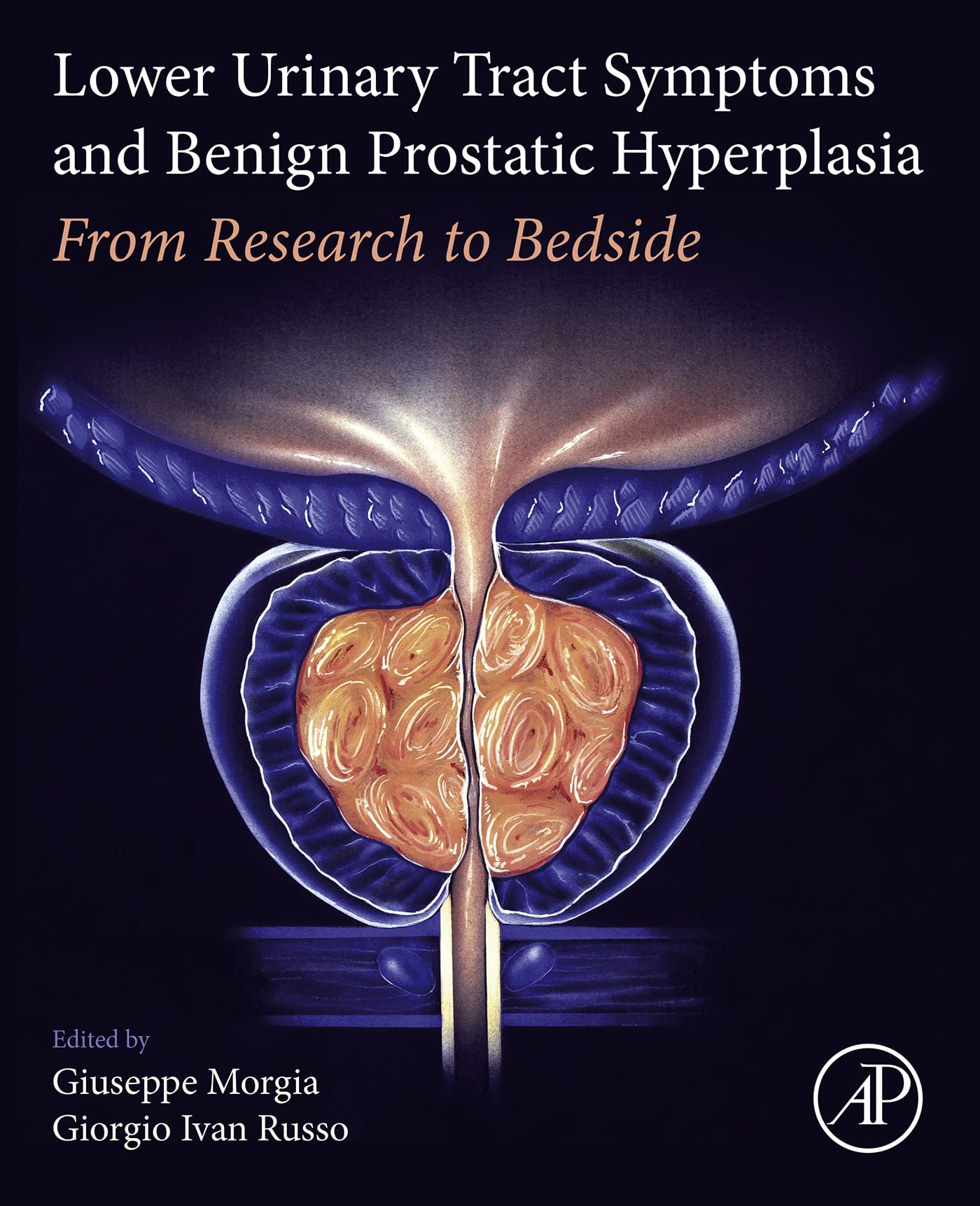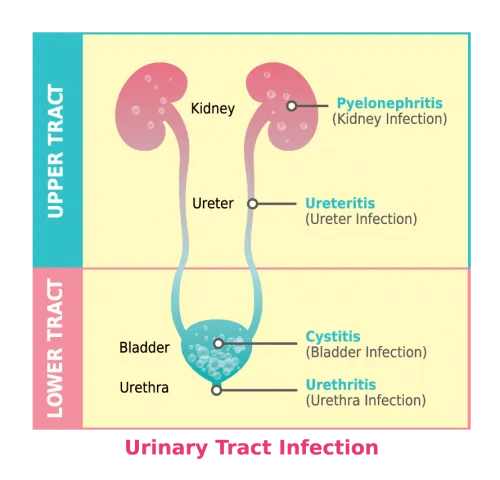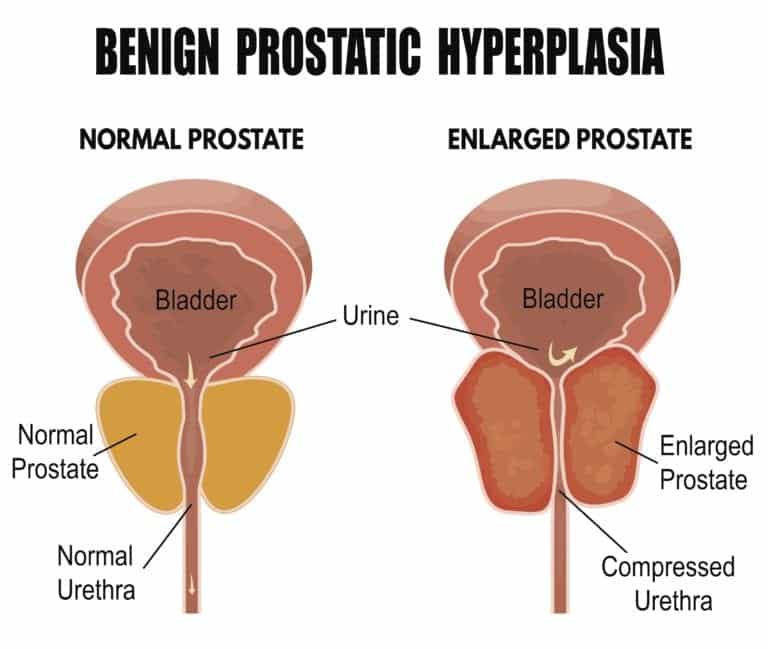Lower Urinary Tract Symptoms: Treatment And Management
For men whose lower urinary tract symptoms are not bothersome or complicated, it is reasonable to offer ‘watchful waiting’ . This involves giving reassurance and information and advice on lifestyle measures such as:
- Reduction in the intake of fluids containing alcohol, caffeine and artificial sweeteners together with avoidance of carbonated drinks is often advised.
Other helpful measures may include:
- Optimising medication to ensure that drugs promoting urinary frequency are kept to a minimum.
The patient should be reviewed if symptoms change or become worse.
- For men with mild or moderate bothersome lower urinary tract symptoms, discuss active surveillance or active intervention .
- Offer men considering treatment for LUTS an assessment of their baseline symptoms with a validated symptom score – eg, I-PSS.
- Surgical treatment is generally reserved for men who have failed or are unable to tolerate drug treatment, or for those who have developed complications.
Epidemiology And Natural History Of Luts And Bph
LUTS associated with or without BPH is common in men. It can wax and wane, but generally progresses with aging. A nationwide survey involving 4480 Japanese men and women aged â¥40 years was reported in 2003. The frequency of all LUTS increased with age. The most common symptoms in men and women are nocturia and daytime frequency. In men, they were followed by weak urinary stream, feeling of incomplete emptying, urinary urgency and urgency incontinence. The most bothersome symptom in men was nocturia. A large-scale study, which recruited 19 165 Western individuals aged â¥18 years, found that 62.5% of men and 66.6% of women were symptomatic, respectively. The most common symptom was nocturia in both men and women. The risk factors of LUTS include aging, lifestyles, ED and chronic lifestyle diseases.-
The prevalence of BPH depends on its definition, varying from 6% to 12% in Japanese men aged in their 60s and 70s. The risk factors of developing BPH are aging, normally functioning testicles and genetic trait. BPH is a progressive disease regardless of race/ethnicity or region. Risk factors for BPH progression are aging, lifestyles, prostate volume, elevated PSA, LUTS, impaired QOL and decreased urinary flow rate., Lethal comorbidities related to BPH are rare.
How Can I Reduce My Risk Of Developing Benign Prostatic Hyperplasia
The best ways to reduce your risk of developing BPH are to make lifestyle changes that improve your prostate and heart health and take supplements.
Exercising at least 30 minutes each day may help prevent BPH or slow prostate growth. Maintaining normal cholesterol, blood pressure and blood sugar levels is also important.
The following herbal supplements may also help reduce your risk of developing BPH:
- Beta-sitosterol. Beta-sitosterol is a micronutrient in plants that may help keep your heart healthy.
- Pygeum africanum. Pygeum africanum is an herbal extract from African cherry tree bark that may help shrink your prostate.
- Flaxseed. Flax is a good source of dietary fiber and omega-3 fatty acids that may help lower your cholesterol.
- Pumpkin seed oil. Pumpkin seed oil comes from pumpkin seeds. It may help shrink your prostate.
Talk to your healthcare provider before taking any new supplements. They may adversely react to other supplements or medications youre currently taking.
Also Check: Best Medicine For Urinary Incontinence
What Are The Symptoms Of Urinary Tract Infections
During a urinary tract infection, the lining of the urinary tract becomes red, irritated, and inflamed and it could lead to the following symptoms:
- Experiencing pain in the side , abdomen, or pelvic area.
- Feeling pressure in the lower pelvis.
- Feeling the need to urinate frequently, or having an urgent need to urinate
- Incontinence or urine leakage
- Pain during urination or seeing blood in urine
- Having abnormal urine color or a strong, foul-smelling urine.
Following are some other symptoms that could be linked to urinary tract infections:
- Experiencing pain during sex
- Experiencing mental changes or confusion
If you experience these symptoms, it is important to consult a doctor. If you get urinary tract infections, you might need to undertake a few tests to find out if diabetes or an abnormal urinary system is the cause of frequent infections.
B Searching For The Evidence: Literature Search Strategies For Identification Of Relevant Studies To Answer The Key Questions

We will search Ovid Medline, Ovid PsycInfo, Ovid Embase, and the Cochrane Central Register of Controlled Trials to identify randomized controlled trials for primary health outcomes published and indexed in bibliographic databases. We will attempt to assess long-term or rare harms with nonrandomized controlled trials and large controlled observational studies if RCTs are not available. Our search strategy includes relevant medical subject headings and natural language terms for LUTS/BPH . These concepts were combined with filters to select trials. We will supplement the bibliographic database search with forward and backward citation searching of relevant systematic reviews and other key references. We will update searches while the draft report is under public/peer review.
We will search for grey literature in ClinicalTrials.gov and to identify completed and ongoing studies. We will search for conference abstracts from the past three years to identify ongoing studies. Grey literature search results will be used to identify studies, outcomes, and analyses not reported in the published literature. Information from grey literature will also be used to assess publication and reporting bias and inform future research needs. Additional grey literature will be solicited through a notice posted in the Federal Register and Scientific Information Packets and other information solicited through the AHRQ Effective Health Care Web site.
Read Also: Zinc For Urinary Tract Infection
What Are Lower Urinary Tract Symptoms
Lower urinary tract symptoms are storage, voiding and postmicturition symptoms affecting the lower urinary tract. LUTS can significantly reduce men’s quality of life and may point to serious pathology of the urogenital tract. Prevailing guidelines suggest that the pathogenesis of LUTS is multifactorial and can include one or several diagnoses, commonly benign prostatic obstruction, nocturnal polynocturia and detrusor muscle instability.
LUTS are common and not necessarily a reason for suspecting prostate cancer. Patients tend to fall into three categories:
- Mild symptoms: mainly require reassurance and exclusion of cancer or risk of future complications.
- Troublesome symptoms, suitable for medical treatment.
- Those requiring surgical treatment.
Lower Urinary Tract Symptoms
Men who suffer lower urinary tract symptoms such as incontinence or problems urinating may have benign prostatic hyperplasia , or enlargement of the prostate gland. An enlarged prostate gland may result in abnormal bladder function by causing bladder outlet obstruction, ultimately resulting in LUTS. LUTS may include a slow or weak urine stream, hesitancy in releasing urine, difficulty in emptying the bladder, and needing to get up at night to urinate.
An ultrasound of the pelvis may be appropriate to examine men with LUTS who are suspected to have BPH. The ultrasound of the pelvis will assess bladder volume and residual urine after urination. It may also be possible to see an enlarged prostate gland pushing up on the bladder.
A retroperitoneal ultrasound of the kidneys may also be appropriate in evaluating LUTS related to BPH, especially in patients with abnormal kidney function, blood in the urine, infection, or kidney stones. This examination includes imaging of the bladder, equivalent to ultrasound of the pelvis.
For more information, please visit the Enlarged Prostate page.
By Rachael Newman and Dianna M.E. Bardo, MD. This information originally appeared in the Journal of the American College of Radiology.
This page was reviewed on July, 25, 2022
Read Also: How To Stop A Urinary Tract Infection Without Antibiotics
Association Of Sleep Quality With Lower Urinary Tract Symptoms/benign Prostatic Hyperplasia Among Men In China: A Cross
- 1Department of Urology, Institute of Urology, National Clinical Research Center for Geriatrics and Center of Biomedical Big Data, West China Hospital of Sichuan University, Chengdu, China
- 2West China School of Clinical Medicine, West China Hospital, Sichuan University, Chengdu, China
- 3Department of Clinical Research, West China Hospital, Sichuan University, Chengdu, China
- 4Institute of Hospital Management of West China Hospital/West China School of Nursing, Sichuan University, Chengdu, China
- 5The First Peoples Hospital of Longquanyi District, Chengdu, China
Objective: As the population aged, voiding dysfunction has been steadily rising among males during the past decade. Increasing evidence showed that sleep disorders are associated with an increasing risk of various diseases, but the association between sleep disorders and lower urinary tract symptoms /benign prostatic hyperplasia among Chinese males have not been well characterized.
Materials and methods: We conducted a cross-sectional analysis of data from West China Natural Population Cohort Study 20192021. Sleep quality was assessed by Pittsburgh sleep quality index in Chinese version. LUTS/BPH as a dependent variable of a binary variable, assessed by a self-reported questionnaire. Multivariate logistic regression analysis were performed to evaluate the correlation between sleep disorders and the risk of LUTS/BPH after adjusting for confounding factors.
What Should I Watch Out For
Symptoms of BPH fall into 2 categories. Those caused by pressure on your urethra are called obstructive. The others start in your bladder.
Some of the obstructive symptoms include:
- Trouble starting to urinate
- You have to stop and restart several times
- Pee dribbles out at the end
If BPH causes changes in your bladder, it may include these signs:
- You suddenly feel a strong need to urinate. Doctors call this âurgency.â
- You have to pee more than 8 times a day. This is called âfrequency.â
- Even after you go, you feel as though your bladder is not empty.
- You wake up often in the night to relieve yourself. This is called ânocturia.â
Also Check: Gnc Ultra Mega Urinary Tract Support For Cats
Referral For Specialist Assessment
Refer men for specialist assessment if they have:
- Bothersome lower urinary tract symptoms that have not responded to conservative management or drug treatment.
- LUTS complicated by recurrent or persistent UTIs.
- Urinary retention.
- Renal impairment thought to be due to lower urinary tract dysfunction.
- Suspected urological cancer.
- Stress urinary incontinence.
Other indications for referral include immediate referral for acute retention of urine and acute kidney injury and urgent referral for visible haematuria and culture-negative dysuria.
How Common Is Benign Prostatic Hyperplasia
Benign prostatic hyperplasia is the most common prostate problem for men older than age 50. In 2010, as many as 14 million men in the United States had lower urinary tract symptoms suggestive of benign prostatic hyperplasia.1 Although benign prostatic hyperplasia rarely causes symptoms before age 40, the occurrence and symptoms increase with age. Benign prostatic hyperplasia affects about 50 percent of men between the ages of 51 and 60 and up to 90 percent of men older than 80.2
Also Check: How To Make A Urinary Tract Infection Go Away
Management Of Benign Prostatic Hyperplasia/ Lower Urinary Tract Symptoms
The goal of this revised guideline is to provide a useful reference on the effective evidence-based surgical management of male lower urinary tract symptoms secondary to benign prostatic hyperplasia .
To cite this guideline:
- Lerner LB, McVary, KT, Barry MJ et al: Management of lower urinary tract symptoms attributed to benign prostatic hyperplasia: AUA Guideline part I, initial work-up and medical management. J Urol 2021 206: 806.
- Lerner LB, McVary, KT, Barry MJ et al: Management of lower urinary tract symptoms attributed to benign prostatic hyperplasia: AUA Guideline part II, surgical evaluation and treatment . J Urol 2021 206: 818.
Guideline summaries as they appear in The Journal of Urology® Part I, Part II
Español translated guideline and translated algorithm courtesy of Confederacion Americana de Urologia
Background And Objectives For The Systematic Review

Benign Prostatic Hyperplasia is a “histologic diagnosis that refers to the proliferation of smooth muscle and epithelial cells within the prostatic transition zone.”1 Men are likely to develop BPH as they age. Half of men ages 51 60 years old and 80 percent of men over 80 years old have BPH according to autopsy data.2
About half of men with BPH develop an enlarged prostate gland, called benign prostatic enlargement , and among these, about half develop bladder outlet obstruction .3 BOO and/or changes in smooth muscle tone and resistance that can accompany BPH often result in lower urinary tract symptoms .1 LUTS are storage disturbances, such as daytime urinary urgency and nocturia, and/or voiding disturbances, such as urinary hesitancy, weak stream, straining, and prolonged voiding.2 LUTS affect an estimated three percent of men ages 4549 years old and 30 percent of men over 85 years old.2 Urinary hesitancy, weak stream, and nocturia are the most commonly reported LUTS.4 BPH/LUTS negatively impact quality of life2,3 and cost the United States over $1 billion annually.3
Monotherapy with 5-ARI agents finasteride and dutasteride is another option for LUTS/BPH and BPE.7 Systematic reviews demonstrate that 5-ARIs are safe and effective13,14 and may be better than ABs in preventing disease progression .14
| Drug class |
|---|
Read Also: Multiple Sclerosis And Urinary Incontinence
Doctor At Home In Dubai
In case you are experiencing any of the above-mentioned symptoms and need a urinary tract infection treatment, First Response Healthcare is just a phone call away. First Response Healthcare is a JCI accredited home healthcare company that offers the service of Doctor On Call, wherein a doctor can visit your home, hotel, or office for diagnosis and treatment. FRH has received a Gold Seal of Approval from the Joint Commission International for its high-quality services. Our team of doctors is available 24*7 and you can schedule an appointment with them at any time, even on weekends and public holidays.
Our team of doctors is DHA qualified, highly experienced, and internationally trained and can offer the right medication and guidance for urinary tract infection treatment or any other health issues that you might be facing. Our team of doctors can treat a range of ailments and issues including colds, flu, migraines, chronic diseases, and so on. Our doctors are from diverse backgrounds and can speak one or more of these languages English, Arabic, Turkish, Urdu, Hindi, Punjabi, Pashto, Sindhi, and Russian. They are also very compassionate, and they will always prioritize your comfort. When required, our doctors can also put you in touch with or make referrals to specialists, physiotherapists, or hospitals.
Where Do We Offer Our Services? We cover the entire emirate of Dubai and Ras Al Khaimah and our doctor can visit you at your home, hotel, or office.
Should I Go With A Treatment
If your symptoms become worse, it’s time to talk to your doctor about an active treatment. Some things to ask yourself and your doctor about each option:
- How much will my condition improve?
- How long will the effects last?
- Is there a chance that the treatment will cause problems?
From there, you can talk with them about medications, supplements or surgery.
Also Check: Natural Remedies For Male Urinary Tract Infection
How Do I Empty My Bladder With An Enlarged Prostate
Enlarged Prostate: Bathroom Tips
Cq : What Managements Are Recommended For Urinary Retention
At first indwelling catheter or intermittent catheterization is indicated, followed by assessment of the upper urinary tract and reasons for retention ., Catheter removal is anticipated by administration of α1-blockers and/or 5α-reductase inhibitors for BPH . Surgical intervention is likely to be required for large prostates.
Don’t Miss: Urinary Issues In Male Cats
Bph Treatment And Sexual Function
Treatments for BPH can impact adversely on sexual function. Surgical interventions often result in ejaculatory dysfunction, α1-blockers sometimes cause ejaculatory dysfunction and 5α-reductase inhibitors and anti-androgens result in multiple sexual dysfunctions, being more severe for the latter. See CQ 15.
Measurement Of Lower Urinary Tract Symptoms/benign Prostatic Hyperplasia
In addition, males were asked, Have you ever been diagnosed with prostate hyperplasia? Related symptoms of prostatic hyperplasia, including difficulty urinating, increased nocturia, urinary incontinence, were explained to all the participants. In WCNPCS study, symptoms were mainly assessed based on participant self-report, which was also commonly used in previous studies . The current study showed that men with sleep disorders are more likely to report daytime LUTS . In order to make the results more reliable and exclude the direct impact of nocturia on sleep, We introduced daytime LUTS, which means symptoms of LUTS/BPH except nocturia.
Recommended Reading: Lemon Juice And Urinary Tract Infections
Cq 1: What Treatments Are Recommended To Avoid Sexual Dysfunction As An Adverse Event
PDE5i are recommended to avoid ED. Surgical therapies other than holmium laser enucleation of the prostate and photoselective vaporization of the prostate might result in ED. Surgeries, α1-blockers, 5α-reductase inhibitors and anti-androgens should be avoided to prevent ejaculatory dysfunction. To retain libido, 5α-reductase inhibitors and especially anti-androgens should be avoided ., –
Review Of Key Questions

AHRQ posted the key questions on the Effective Health Care Web site for public comment. The EPC refined and finalized the key questions after review of the public comments, and input from Key Informants and the Technical Expert Panel . This input is intended to ensure that the key questions are specific and relevant.
Recommended Reading: What Causes Frequent Urinary Tract Infections In The Elderly
Search Strategy And Selection Criteria
We performed a literature search up until 31 July 2016 using a combination of search terms on the following database: Pubmed, EMBASE, Cinahl plus, AMED, CENTRAL and Web of Science for articles describing the prevalence of BPH among males. Keywords used include: prevalence, incidence, prostate enlargement, benign prostate hyperplasia, benign prostatic hypertrophy, bladder outlet obstruction and lower urinary tract symptoms. Two authors independently reviewed the records to identify for potentially studies and full text of studies were retrieved if necessary. We also manually search bibliographies of included studies and any relevant review articles for additional references. In the event of multiple publications of identical data, the most informative version of the study was used. Any discrepancies were resolved by open discussion.